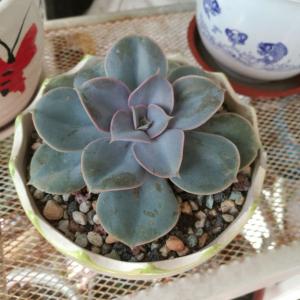文章
Alicia
2017年05月22日

These 7 vegetable gardening tips on companion planting, intercropping and crop rotation will improve the productivity of your garden.
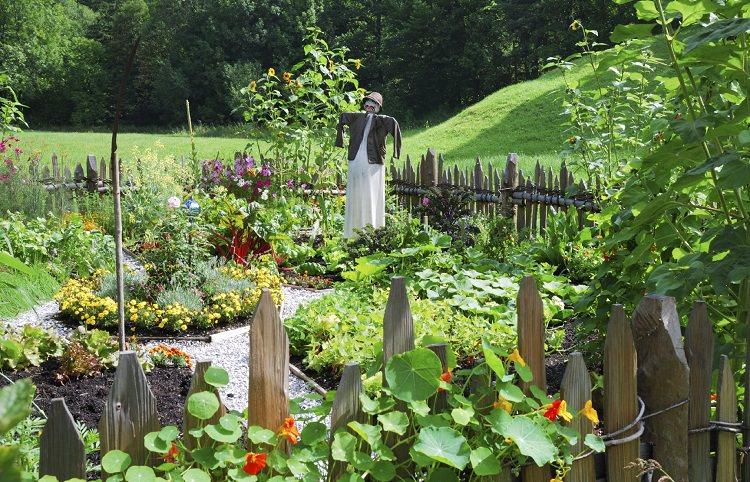
1) Do Crop Rotation: Avoid planting the plants of the same family at similar site each year
It is a good practice, avoid planting the plants of the same family at the same site continuously. Usually, the plants from similar family have common pest and disease problems, they also draw the same nutrition from the soil again and again. A useful and informative article on this issue that you must read for more information is available on the Harvest to Table.
2) Consider the Depth of Roots: Grow shallow root plants with deep root plants
Combine vegetables that have different root development. Those with shallow roots (lettuces) are best planted with those that root deeply (tomatoes). It allows them to “catch” the nutrients at different depths and this will prevent their competition for nutrients at the root zone.
3) Interplanting: Plant fast growing species with slow growing species
Cultivate the fast growing smaller crop at the same time with the large vegetable plants that take time. This will give all the space and time to both the species to develop well until harvest without damaging the other. For example, you can grow radishes with carrots, radishes mature early and harvested first, thus making more space for carrots to grow.
4) Grow legumes: Planting legumes fix the nitrogen in soil
Although there are vegetables that poorly tolerate their presence, it is always advisable to grow legumes in crop rotation. The reason is obvious: the plants (peas, beans, clover etc.) belong to this family have the ability to fix nitrogen. Thanks to the action of nitrogen-fixing bacteria that live in symbiosis with their roots.
5) Companion planting: Grow pest repellent plants
Plants from allium family such as garlic, leek and onion. Herbs like lavender, oregano, lemon balm, holy basil and flowers like nasturtiums and marigold are great pest repellents. These plants can be tucked here and there in your vegetable garden bed to deter some harmful insects and pests. For example, if nematodes are the problem in your soil, plant marigolds. Marigold roots consist thiophene that repels nematodes. Vegetables like potatoes and tomatoes usually suffer from them, in such a case you can plant marigold at the same site for a couple of months before planting these crops. For more information about marigold and its repellent properties read this educative article of the University of Florida.
6) Avoid plants that have high nutritional requirements: Don’t grow vegetables together that require higher amount of nutrition
Avoid the cultivation of plants that require a high consumption of nutrients (especially nitrogen) together. Grow them with plants that are less demanding and have low nutritional requirements. However, there is an exception to this rule, plants that have the same nutrition and watering needs must be grown together.
7) Disparity in size: Maintain balance in the size of the plants
Another element to be considered in the choice is the size of the vegetables you’re growing together. Plants that grow much in volume or in height (as in the case of cucumber, vertically) can shade smaller plants and disturb their growth. Conversely, this disparity in size can be best used if you grow such plants that thrive well in a little shade under tall, spreading plants.

1) Do Crop Rotation: Avoid planting the plants of the same family at similar site each year
It is a good practice, avoid planting the plants of the same family at the same site continuously. Usually, the plants from similar family have common pest and disease problems, they also draw the same nutrition from the soil again and again. A useful and informative article on this issue that you must read for more information is available on the Harvest to Table.
2) Consider the Depth of Roots: Grow shallow root plants with deep root plants
Combine vegetables that have different root development. Those with shallow roots (lettuces) are best planted with those that root deeply (tomatoes). It allows them to “catch” the nutrients at different depths and this will prevent their competition for nutrients at the root zone.
3) Interplanting: Plant fast growing species with slow growing species
Cultivate the fast growing smaller crop at the same time with the large vegetable plants that take time. This will give all the space and time to both the species to develop well until harvest without damaging the other. For example, you can grow radishes with carrots, radishes mature early and harvested first, thus making more space for carrots to grow.
4) Grow legumes: Planting legumes fix the nitrogen in soil
Although there are vegetables that poorly tolerate their presence, it is always advisable to grow legumes in crop rotation. The reason is obvious: the plants (peas, beans, clover etc.) belong to this family have the ability to fix nitrogen. Thanks to the action of nitrogen-fixing bacteria that live in symbiosis with their roots.
5) Companion planting: Grow pest repellent plants
Plants from allium family such as garlic, leek and onion. Herbs like lavender, oregano, lemon balm, holy basil and flowers like nasturtiums and marigold are great pest repellents. These plants can be tucked here and there in your vegetable garden bed to deter some harmful insects and pests. For example, if nematodes are the problem in your soil, plant marigolds. Marigold roots consist thiophene that repels nematodes. Vegetables like potatoes and tomatoes usually suffer from them, in such a case you can plant marigold at the same site for a couple of months before planting these crops. For more information about marigold and its repellent properties read this educative article of the University of Florida.
6) Avoid plants that have high nutritional requirements: Don’t grow vegetables together that require higher amount of nutrition
Avoid the cultivation of plants that require a high consumption of nutrients (especially nitrogen) together. Grow them with plants that are less demanding and have low nutritional requirements. However, there is an exception to this rule, plants that have the same nutrition and watering needs must be grown together.
7) Disparity in size: Maintain balance in the size of the plants
Another element to be considered in the choice is the size of the vegetables you’re growing together. Plants that grow much in volume or in height (as in the case of cucumber, vertically) can shade smaller plants and disturb their growth. Conversely, this disparity in size can be best used if you grow such plants that thrive well in a little shade under tall, spreading plants.
4
2
文章
Micky
2017年05月22日

Whether you’re growing sassafras tree or not, read these sassafras tree facts.
Sassafras tree grows in the United States and in south of Mexico. In the northern US, the tree grows up to only 7 to 9 m. high, but can grow as tall as 30 m. (100 feet) high in the south. Its shredded leaves and bark exude lemony scent. Fuzzy, yellow-green leaves, flowers, bark and roots have many medicinal and culinary uses. Read more sassafras tree facts below.

Polymorphic leave
Polymorphic is a botanical term used to describe the leaves of trees such as sassafras. This means that on a tree, even on a branch, leaves of different shapes exist. Sassafras tree leaves often grow in three shapes: three-lobed, mitten-shaped and elliptical or egg-shaped. Most of the time there are just three lobes on the leaves, but up to seven are possible.
Size and color
Sassafras tree leaves are not particularly large, measuring between 3 and 7 inches long and up to 4 inches wide. The upper surface of the sassafras leaves is of bright green color, but the lower part of the leaves is considerably less bright, with an almost white appearance.
Fall colors of sassafras leaves are a major asset for the tree as a landscaping tool. Often spectacular, the leaves turn purple, orange, yellow and red.
When sassafras leaves are crushed or rubbed, they emit a pungent aroma. The petiole from where leaf attaches to the branch on a sassafras tree is long and thin.
Attractive to wildlife
Sassafras tree is also attractive for many wild creatures. Butterfly caterpillars and deer likes to eat its leaves. In winter rabbits considers sassafras bark a delicious treat.
Fruits are eaten by many birds, including: Great Crested Flycatchers, Wild Turkey, Pileated Woodpeckers, Flickers, and Northern Mockingbirds. Small mammals also eat the fruit.
More Sassafras Tree Facts
Sassafras trees are known to repel mosquitoes and other insects.
The tree is designated as an ornamental tree because of its strange shaped leaves.
The rich flavor from sassafras roots have also been put in soups and stews for an unusual extra flavor.
The roots and bark of the sassafras tree was used to make oil.
Some soaps, lotions and flavors of medicine have been adding this tree oil for an unusual, perhaps somewhat exotic, smell or taste.
Also Read: How to grow sassafras
Sassafras tree grows in the United States and in south of Mexico. In the northern US, the tree grows up to only 7 to 9 m. high, but can grow as tall as 30 m. (100 feet) high in the south. Its shredded leaves and bark exude lemony scent. Fuzzy, yellow-green leaves, flowers, bark and roots have many medicinal and culinary uses. Read more sassafras tree facts below.

Polymorphic leave
Polymorphic is a botanical term used to describe the leaves of trees such as sassafras. This means that on a tree, even on a branch, leaves of different shapes exist. Sassafras tree leaves often grow in three shapes: three-lobed, mitten-shaped and elliptical or egg-shaped. Most of the time there are just three lobes on the leaves, but up to seven are possible.
Size and color
Sassafras tree leaves are not particularly large, measuring between 3 and 7 inches long and up to 4 inches wide. The upper surface of the sassafras leaves is of bright green color, but the lower part of the leaves is considerably less bright, with an almost white appearance.
Fall colors of sassafras leaves are a major asset for the tree as a landscaping tool. Often spectacular, the leaves turn purple, orange, yellow and red.
When sassafras leaves are crushed or rubbed, they emit a pungent aroma. The petiole from where leaf attaches to the branch on a sassafras tree is long and thin.
Attractive to wildlife
Sassafras tree is also attractive for many wild creatures. Butterfly caterpillars and deer likes to eat its leaves. In winter rabbits considers sassafras bark a delicious treat.
Fruits are eaten by many birds, including: Great Crested Flycatchers, Wild Turkey, Pileated Woodpeckers, Flickers, and Northern Mockingbirds. Small mammals also eat the fruit.
More Sassafras Tree Facts
Sassafras trees are known to repel mosquitoes and other insects.
The tree is designated as an ornamental tree because of its strange shaped leaves.
The rich flavor from sassafras roots have also been put in soups and stews for an unusual extra flavor.
The roots and bark of the sassafras tree was used to make oil.
Some soaps, lotions and flavors of medicine have been adding this tree oil for an unusual, perhaps somewhat exotic, smell or taste.
Also Read: How to grow sassafras
0
0
文章
笼岛 みどり
2017年05月22日


7月20日の誕生花
7月20日の誕生花は、「ひまわり(向日葵)」です。北アメリカが原産のキク科の1年草で、野生のものは60種ほどあると言われています。7~9月に茎先に20~30㎝ほどの、黄色の大きな花を横向きに咲かせます。
ひまわり(向日葵)について科・属 キク科ヒマワリ属和名向日葵(ヒマワリ)英名 Sunflower学名 Helianthus annuus原産地 北アメリカ開花時期 6月~8月
ひまわり(向日葵)の花言葉と由来
ひまわり(向日葵)の花言葉は、「あこがれ」「あなただけを見つめる」「敬慕」。
ひまわりは、太陽が移動することによってひまわりも花の向きが変わるということから、「日廻り(ひまわり)」と呼ばれていました。学名の「Helianthus」には「太陽の花」という意味があります。
「向日葵」は、ひまわりの花に向日性があることからつけられた「向日」に、「太陽に向かって成長する植物」という意味のある「葵」がつき、「向日葵」とかいて「ひまわり」と呼ばれるようになりました。
花言葉の、「あなただけを見つめる」「あこがれ」は、成長期の頃の花が太陽の動きに合わせるように向きを変えるところから来ています。「敬慕」は、ギリシャ神話の海の精クリティのアポロンへの気持ちを表したと言われています。

ひまわり(向日葵)の種
ひまわりの種は、1.5cmくらいの大きさで、1輪につき500個から3000個ほどの種が出来ます。ひまわりの種といえばハムスターが食べるイメージがありますが、とても栄養が豊富で海外では食用としても人気があります。日本でも、炒って殻が取り除かれたものが販売されています。
ひまわりの種には、リノール酸、葉酸、ビタミン、鉄分、繊維、亜鉛、マグネシウム、カルシウムなどが豊富に含まれていて、とても栄養価が高く、アメリカなどでは長寿や若返りのナッツとして知られているようです。しかし、ナッツは高カロリーなので食べすぎには注意です。
ギリシャ神話のひまわり(向日葵)
ゼウスの息子の太陽神アポロンはまばゆい金髪と美しい顔をもち、類い稀なる竪琴と笛の名手でした。水の精クリュティエは、アポロンに恋こがれますが、叶わぬ恋になってしまいます。それが悲しくてクリュティエは泣いてばかりでした。
クリュティエは、日輪車で東の空に昇ってくるアポロンを待ちつづけ、現れてから西の空に見えなくなるまで目で追い続けました。クリュティエは9日9晩アポロンを見続け、そうしているうちに足は地面に根付き、顔はひまわりの花に変化してしまったといわれています。

他の花言葉の記事はここから探してみよう。LOVEGREEN 花言葉記事一覧
0
0
文章
Abigal
2017年05月22日

Want more flowers in your garden? Here’re 7 tips you should know to keep your plants blooming.1. Use rich soil

Soil that is light and rich in compost or manure provides plenty of nutrients constantly to the plants. A soil that is rich in organic matter also encourages bacterial activity that promotes soil fertility. Add some compost or manure to the soil when planting your plants and go adding them time to time.
2. Deadhead often

Most plants grow better and have more flowers if their wilted and faded blooms are plucked often. When you see the wilted flowers, remove them, so the plant can direct its energy on other flowers and they will be receiving more nutrients. Wilted flowers waste energy and sap. They also attract insect and pests. Also, by cutting off the spent flowers you prevent plants from seeding.
3. Fertilize the plants
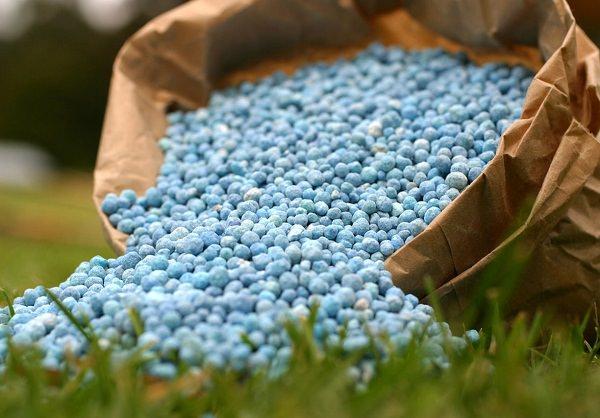
To have more flowers, feed the plants regularly during the growing season with half strength liquid fertilizer, a flowering fertilizer should be used that has more phosphorus than nitrogen, as phosphorus is the element that promotes more flower buds. Also, you can mix time-based fertilizer in the soil at the beginning of the growing season.
4. Provide more sun

Light is essential for the plant’s growth, direct sunlight for several hours a day can be a prerequisite for many plants that come to flower, however, shade loving plants tend to reduce the number of flowers when exposed to more sun.
5. Nurse the roots
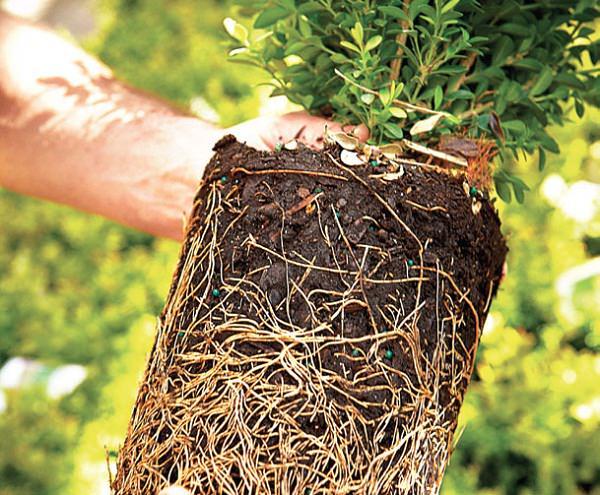
To have healthy plants and abundant blooms– nurse the roots, and remember that it is through them the plants absorb nutrients and water from the soil. When you perform the transplant or when you dig soil around the plant be careful not to cut or damage the roots as if being damaged plant would take a while to recover or it may die.
6. Apply mulch

Plants growing in a mulched soil are usually more vigorous, less prone to pests and diseases.
7. Do moderate watering
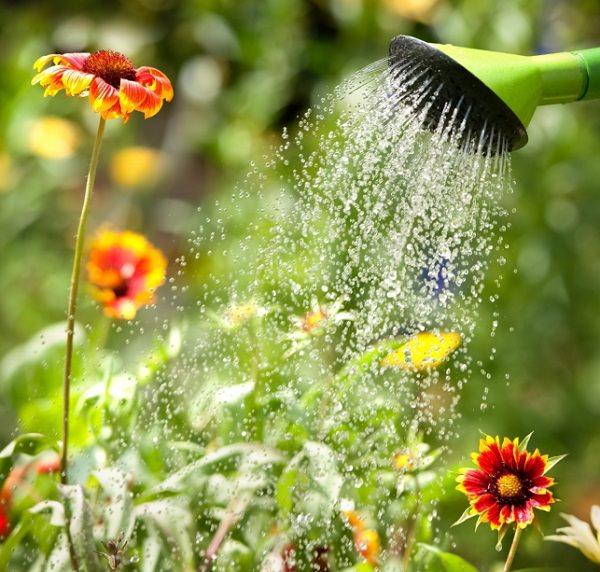
Excess watering tends to favor the development of foliage but can also produce the absence of flowering. Similarly, the lack of water can cause the plant to drop the flower buds. The best way is to do moderate watering (avoiding both overwatering and underwatering) during the flowering season.

Soil that is light and rich in compost or manure provides plenty of nutrients constantly to the plants. A soil that is rich in organic matter also encourages bacterial activity that promotes soil fertility. Add some compost or manure to the soil when planting your plants and go adding them time to time.
2. Deadhead often

Most plants grow better and have more flowers if their wilted and faded blooms are plucked often. When you see the wilted flowers, remove them, so the plant can direct its energy on other flowers and they will be receiving more nutrients. Wilted flowers waste energy and sap. They also attract insect and pests. Also, by cutting off the spent flowers you prevent plants from seeding.
3. Fertilize the plants

To have more flowers, feed the plants regularly during the growing season with half strength liquid fertilizer, a flowering fertilizer should be used that has more phosphorus than nitrogen, as phosphorus is the element that promotes more flower buds. Also, you can mix time-based fertilizer in the soil at the beginning of the growing season.
4. Provide more sun

Light is essential for the plant’s growth, direct sunlight for several hours a day can be a prerequisite for many plants that come to flower, however, shade loving plants tend to reduce the number of flowers when exposed to more sun.
5. Nurse the roots

To have healthy plants and abundant blooms– nurse the roots, and remember that it is through them the plants absorb nutrients and water from the soil. When you perform the transplant or when you dig soil around the plant be careful not to cut or damage the roots as if being damaged plant would take a while to recover or it may die.
6. Apply mulch

Plants growing in a mulched soil are usually more vigorous, less prone to pests and diseases.
7. Do moderate watering

Excess watering tends to favor the development of foliage but can also produce the absence of flowering. Similarly, the lack of water can cause the plant to drop the flower buds. The best way is to do moderate watering (avoiding both overwatering and underwatering) during the flowering season.
1
1
文章
木木
2017年05月21日

本人的苗圃位于安徽省的东南部,长江下游南岸,属亚热带湿润季风气候。气候特点是:光照充足,雨量充沛,四季分明,年平均气温15-16摄氏度,日照时数2000小时左右。最热为7-8月,平均气温超过28℃,极端最高气温接近40℃;最冷为1月,月平均气温仅3℃,曾出现过-10℃的极端最低气温。降雨量大,年降雨量1200毫米,但分布不均,主要集中在春季、梅雨季节和初冬。

一月:仙人掌休眠和生命过程的最小化。气温比较低,因此,我们需要监测温度,无论是在家里还是温室,保持0度以上。必要时,加温。不要轻易浇水,尤其是没有温室的朋友,注意避免冻害。
二月:换盆、授粉。因为有温室、娇丽属、乳突属大都在这个季节开花,连续大晴天,早上可以适量浇水,但要小心,无须浇透,准备开花的多浇水,休眠的少浇或者不浇。一定要注意在阳光明媚的日子里,温室要注意通风,以避免过热或灼伤温室植物。
三月:气温开始平稳,浇水量开始变大,可以翻盆,大部分仙人还没有恢复,注意晒伤。部分地区可以考虑拉起防晒网了。
四月:清明前后,仙人球大都开始生长季节,但仍不要忘晒伤仙人掌的可能。现在,我们可以在连续晴天正常浇水仙人掌。虫子在这个季节也开始活动,可以配药预防虫害。在四月也可以播种和移植。
五月:温度开始爬升, 仙人掌生长开花像疯了似的,所以一定要拍摄一张照片,并将其发送给我。有的种子开始成熟,我采摘成熟的花种子,把它们出售或者播下。这个季节的气温嫁接也是极好的。
六月:本地在6月中上旬开始进入梅雨季节,连绵的阴雨,很高的湿度加上稀少的阳光,是一年中最不利于仙人球的季节,管理上一定要多加小心,不要浇水,这样的天气浇水后很难干透,极其容易导致仙人的腐烂或者徒长。可以在月初浇水时候使用灭菌剂预防。
七月:本地一般在7月的中旬可以出梅,刚出梅要注意放晒,出梅以后,温度直线拉升,有些品种开始停止生长。所以要适当遮阳,控制水量,做到干湿适度、见干见湿。
八月:本地的酷暑到了,连续的晴天,温室在晴天里的温度甚至冲上55度了,要做好降温保湿的工作,防止晒伤,乳突属好像很喜欢这样的季节,有的仍然在开花。
九月:仙人掌仍在增长,但只浇灌干净的水。如果球体沾水要仔细擦干。
十月:仙人掌仍在生长,只是速度放慢了。露天生长的仙人掌需要搬回室内,并开始逐步拉长浇水的间隔。
十一月:仙人掌都停止增长,因此,我们开始断水了,开始为冬天做准备,可以考虑撤下防晒网了。
十二月:仙人掌已经睡着了,所以大家不要打扰他们。但是不要忘记检查适合越冬的温度。

一月:仙人掌休眠和生命过程的最小化。气温比较低,因此,我们需要监测温度,无论是在家里还是温室,保持0度以上。必要时,加温。不要轻易浇水,尤其是没有温室的朋友,注意避免冻害。
二月:换盆、授粉。因为有温室、娇丽属、乳突属大都在这个季节开花,连续大晴天,早上可以适量浇水,但要小心,无须浇透,准备开花的多浇水,休眠的少浇或者不浇。一定要注意在阳光明媚的日子里,温室要注意通风,以避免过热或灼伤温室植物。
三月:气温开始平稳,浇水量开始变大,可以翻盆,大部分仙人还没有恢复,注意晒伤。部分地区可以考虑拉起防晒网了。
四月:清明前后,仙人球大都开始生长季节,但仍不要忘晒伤仙人掌的可能。现在,我们可以在连续晴天正常浇水仙人掌。虫子在这个季节也开始活动,可以配药预防虫害。在四月也可以播种和移植。
五月:温度开始爬升, 仙人掌生长开花像疯了似的,所以一定要拍摄一张照片,并将其发送给我。有的种子开始成熟,我采摘成熟的花种子,把它们出售或者播下。这个季节的气温嫁接也是极好的。
六月:本地在6月中上旬开始进入梅雨季节,连绵的阴雨,很高的湿度加上稀少的阳光,是一年中最不利于仙人球的季节,管理上一定要多加小心,不要浇水,这样的天气浇水后很难干透,极其容易导致仙人的腐烂或者徒长。可以在月初浇水时候使用灭菌剂预防。
七月:本地一般在7月的中旬可以出梅,刚出梅要注意放晒,出梅以后,温度直线拉升,有些品种开始停止生长。所以要适当遮阳,控制水量,做到干湿适度、见干见湿。
八月:本地的酷暑到了,连续的晴天,温室在晴天里的温度甚至冲上55度了,要做好降温保湿的工作,防止晒伤,乳突属好像很喜欢这样的季节,有的仍然在开花。
九月:仙人掌仍在增长,但只浇灌干净的水。如果球体沾水要仔细擦干。
十月:仙人掌仍在生长,只是速度放慢了。露天生长的仙人掌需要搬回室内,并开始逐步拉长浇水的间隔。
十一月:仙人掌都停止增长,因此,我们开始断水了,开始为冬天做准备,可以考虑撤下防晒网了。
十二月:仙人掌已经睡着了,所以大家不要打扰他们。但是不要忘记检查适合越冬的温度。
0
0
文章
曹秋柳
2017年05月21日
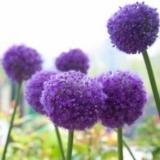
金盏菊在幼苗3片真叶时移苗一次,待苗5~6片真叶时定植于10~12厘米盆。定植后7~10天,摘心促使分枝或用0.4%比久溶液喷洒叶面1~2次来控制植株高度。
金盏菊的生长期每半月施肥1次,或用“卉友”20-20-20通用肥。肥料充足,金盏菊开花多而大。相反,肥料不足,花朵明显变小退化。花期不留种,将凋谢花朵剪除,有利花枝萌发,多开花,延长观花期。留种要选择花大色艳、品种纯正的植株,应在晴天采种,防止脱落。
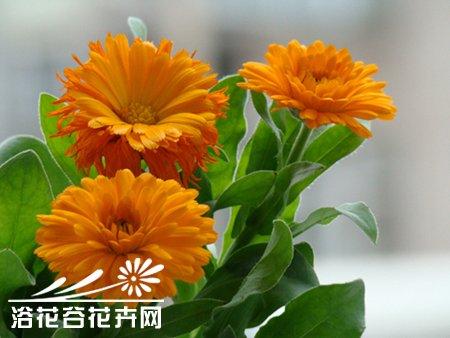
金盏菊的生长期间应保持土壤湿润,每15-30天施10倍水的腐熟尿液一次,施肥至2月底止。在金盏菊长至幼苗后期,叶片4-5个时,实行摘尖(即摘心)能够促使侧枝发育,增加开花数量,在第一茬花谢之后立即抹头,也能促发侧枝再度开花。
另外低温处理种子播种,将种子放入0℃冰箱中24小时,取出后即在露地播种,苗床要遮阴,八月中旬发芽,每周追施一次稀薄腐熟粪水,九月下旬也能开花。http://www.yuhuagu.com
金盏菊的开花期可以通过改变栽培措施加以调节,调节的措施主要有以下几种:
1、早春正常开花之后,及时检出残花梗,促使其重发新枝开花,加强水肥管理,到了9-10月可再次开花。
2、8月下旬秋播盆内,降霜后移至8-10℃温度下培养,白天放室外背风向阳处,严寒时放在室内向阳窗台上。一周左右浇一次水,保持盆土湿润,每月施加一次复合液肥,这样到了隆冬季节即能不断开花。
3、三月底或四月初直播于庭院,苗出齐后适当间苗或移植,给予合理的肥水条件,六月初即可开花。因金盏菊成化需要较长的低温阶段,故春播植株比秋播的生长弱,花朵小。
4、八月下旬露地秋播,苗期适时控制浇水,培育壮苗。入冬后移栽到防寒向阳地内越冬,气温降至0℃以下时,夜间加盖草帘防寒,白天除去草帘。当最低气温降至到零下7℃以下时,在草帘下加盖一层塑料薄膜。此时白天只打开草帘,不打开薄膜,但晴天中午前后宜适当通风。翌年早春最低气温回升到零下7℃以上时,及时除去薄膜,夜间盖上草帘即可。待最低气温升到0℃时应立即除去草帘。此时适当浇水保持土壤的湿润性,同时,每隔15天左右追加一次稀薄饼肥水,这样到了五一节,金盏菊便可鲜花怒放。
此外,现将金盏菊种子放在0℃冰箱内数日进行低温处理,然后于八月上旬播种于露地,九月下旬也能开花。
金盏菊的生长期每半月施肥1次,或用“卉友”20-20-20通用肥。肥料充足,金盏菊开花多而大。相反,肥料不足,花朵明显变小退化。花期不留种,将凋谢花朵剪除,有利花枝萌发,多开花,延长观花期。留种要选择花大色艳、品种纯正的植株,应在晴天采种,防止脱落。

金盏菊的生长期间应保持土壤湿润,每15-30天施10倍水的腐熟尿液一次,施肥至2月底止。在金盏菊长至幼苗后期,叶片4-5个时,实行摘尖(即摘心)能够促使侧枝发育,增加开花数量,在第一茬花谢之后立即抹头,也能促发侧枝再度开花。
另外低温处理种子播种,将种子放入0℃冰箱中24小时,取出后即在露地播种,苗床要遮阴,八月中旬发芽,每周追施一次稀薄腐熟粪水,九月下旬也能开花。http://www.yuhuagu.com
金盏菊的开花期可以通过改变栽培措施加以调节,调节的措施主要有以下几种:
1、早春正常开花之后,及时检出残花梗,促使其重发新枝开花,加强水肥管理,到了9-10月可再次开花。
2、8月下旬秋播盆内,降霜后移至8-10℃温度下培养,白天放室外背风向阳处,严寒时放在室内向阳窗台上。一周左右浇一次水,保持盆土湿润,每月施加一次复合液肥,这样到了隆冬季节即能不断开花。
3、三月底或四月初直播于庭院,苗出齐后适当间苗或移植,给予合理的肥水条件,六月初即可开花。因金盏菊成化需要较长的低温阶段,故春播植株比秋播的生长弱,花朵小。
4、八月下旬露地秋播,苗期适时控制浇水,培育壮苗。入冬后移栽到防寒向阳地内越冬,气温降至0℃以下时,夜间加盖草帘防寒,白天除去草帘。当最低气温降至到零下7℃以下时,在草帘下加盖一层塑料薄膜。此时白天只打开草帘,不打开薄膜,但晴天中午前后宜适当通风。翌年早春最低气温回升到零下7℃以上时,及时除去薄膜,夜间盖上草帘即可。待最低气温升到0℃时应立即除去草帘。此时适当浇水保持土壤的湿润性,同时,每隔15天左右追加一次稀薄饼肥水,这样到了五一节,金盏菊便可鲜花怒放。
此外,现将金盏菊种子放在0℃冰箱内数日进行低温处理,然后于八月上旬播种于露地,九月下旬也能开花。
0
1
文章
Rainbow
2017年05月21日

旱金莲因其叶形似碗莲,花多橘红色而得此名。盛开时宛如群蝶飞舞,一片生机勃勃的景象。花期夏秋两季,尤以7~8月份炎夏开花最盛。
冬季和早春控制室温在16~24℃的条件下可常年开花不断。另外,若要在元旦、春节期间开花,可在上一年8月份播种;需在“五一”节赏花,可在上一年12月份于室内播种。
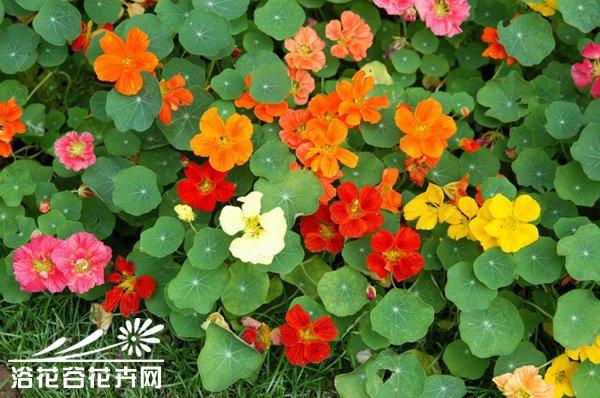
想在国庆节观花的,则在5月底6月初播种,高温季节及时遮荫或移至通风凉爽处生长;如果要在早春2~3月份开花,需在上一年10月份室内播种,室温保持在15℃左右,长有3~4片真叶时上盆即可达到目的。
冬季和早春控制室温在16~24℃的条件下可常年开花不断。另外,若要在元旦、春节期间开花,可在上一年8月份播种;需在“五一”节赏花,可在上一年12月份于室内播种。

想在国庆节观花的,则在5月底6月初播种,高温季节及时遮荫或移至通风凉爽处生长;如果要在早春2~3月份开花,需在上一年10月份室内播种,室温保持在15℃左右,长有3~4片真叶时上盆即可达到目的。
0
0
文章
stone
2017年05月21日
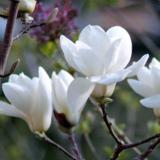
朱顶红的适宜生长温度为18~25℃,自然花期为4~5月份。如何是2朱顶红一年中多次开花,应采取以下措施:
①低温处理
花谢后,剪去花梗及叶片,放置在温度为0~5℃的冷藏箱中处理7天,然后移到室外。
②确保肥料
为了让朱顶红多次开花,冷藏后需施浓液肥1次;也可以通过翻盆 施加基肥。在生长中还要追施液肥,同时注意浇水。
③保持生长温度
朱顶红生长温度要保持在18~25℃,低于18℃要适当加温,高于25℃需采取降温措施。
只要按上述方法养护,周而复始就能使朱顶红多次开花。

①低温处理
花谢后,剪去花梗及叶片,放置在温度为0~5℃的冷藏箱中处理7天,然后移到室外。
②确保肥料
为了让朱顶红多次开花,冷藏后需施浓液肥1次;也可以通过翻盆 施加基肥。在生长中还要追施液肥,同时注意浇水。
③保持生长温度
朱顶红生长温度要保持在18~25℃,低于18℃要适当加温,高于25℃需采取降温措施。
只要按上述方法养护,周而复始就能使朱顶红多次开花。

0
1
文章
智人
2017年05月21日
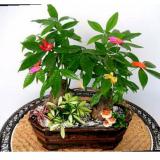
要说吊兰冬天怎么养,我们首先要了解吊兰所能承受的最低温度,因为一旦超越了这个极限,其他养护方法都是徒劳的了。吊兰不耐寒,一般来说在冬天温度保持在5-7℃才能带着绿叶过冬,而且吊兰不能受霜冻,所以如果是室外养护的,在霜冻的时候应该搬入室内。
在北方有暖气的地方,在室内正常养护就可以了,该浇水浇水。如果是北方没有暖气的地方,因为编辑没有尝试过,只能说尽量保证温度,另外,就不要浇水了,因为吊兰是肉质根,会存储一些水分,不浇水暂时不会死,即便是叶子枯萎了,来年春天依旧有机会发新芽的。
南方部分地区没有暖气但是冬天温度相对比较冷,只要不结冰吊兰就可以熬得过,不过叶子枯萎了花友不用担心,切记不要浇水,这样根系还是活着的,春天来临就可以了。
看下面这幅图,是一位花友的吊兰,从图上我们就可以看到,吊兰在叶子枯萎的差不多了,索性被剃头了,只剩下一点点绿叶,即便这样,也没有问题。
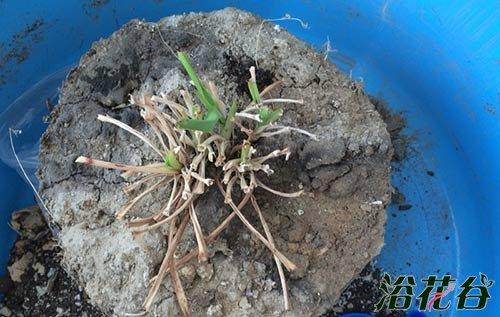
对于吊兰冬天怎么样,简单的说就是如果养护温度可以高于7℃,就适当少浇水,正常养护,如果温度达不到,那么应该尽量做好保温工作,控水。
在北方有暖气的地方,在室内正常养护就可以了,该浇水浇水。如果是北方没有暖气的地方,因为编辑没有尝试过,只能说尽量保证温度,另外,就不要浇水了,因为吊兰是肉质根,会存储一些水分,不浇水暂时不会死,即便是叶子枯萎了,来年春天依旧有机会发新芽的。
南方部分地区没有暖气但是冬天温度相对比较冷,只要不结冰吊兰就可以熬得过,不过叶子枯萎了花友不用担心,切记不要浇水,这样根系还是活着的,春天来临就可以了。
看下面这幅图,是一位花友的吊兰,从图上我们就可以看到,吊兰在叶子枯萎的差不多了,索性被剃头了,只剩下一点点绿叶,即便这样,也没有问题。

对于吊兰冬天怎么样,简单的说就是如果养护温度可以高于7℃,就适当少浇水,正常养护,如果温度达不到,那么应该尽量做好保温工作,控水。
2
1
文章
stone
2017年05月21日

一、收到种球后,先在18℃左右、通风阴凉的环境下放置2天,使在运输过程中可能造成的伤口愈合后再种植,若要长期贮存,则必须存放在7℃至10℃(湿度80%)的冷藏库中。
二、从种植到开花及盛花期,因品种而有所不同,且日照长及高温会促使提早开花。一般而言,大球较小球开花早。
三、种植的时候种球芽朝上,上面覆土约2.5厘米至3厘米。球径12厘米至14厘米的可以用4寸至4.5寸盆,球径16厘米至18厘米的用5寸至5.5寸盆。盆子太小或种得浅,生长势容易衰弱。
四、种植的介质要求排水良好、通气佳、pH值在6至6.5,栽培土中泥炭土含量在30%至50%,其他则可用大颗粒的介质,以利通气,如沙、树皮、珍珠岩、蛭石等。

二、从种植到开花及盛花期,因品种而有所不同,且日照长及高温会促使提早开花。一般而言,大球较小球开花早。
三、种植的时候种球芽朝上,上面覆土约2.5厘米至3厘米。球径12厘米至14厘米的可以用4寸至4.5寸盆,球径16厘米至18厘米的用5寸至5.5寸盆。盆子太小或种得浅,生长势容易衰弱。
四、种植的介质要求排水良好、通气佳、pH值在6至6.5,栽培土中泥炭土含量在30%至50%,其他则可用大颗粒的介质,以利通气,如沙、树皮、珍珠岩、蛭石等。

0
0
文章
绮丽
2017年05月21日


#耧斗菜 的花期
耧斗菜是在每年的5月份——7月份的时候开花,一般耧斗菜在开花的时候,会开花3朵到7朵,一般是蓝色、紫色,也有其他的一些颜色,花药是黄色的。

耧斗菜的花语和传说
耧斗菜有着不一样的花语,必定要得手,坚持要胜利,像是紫色的耧斗菜,它的象征意义就是胜利。
关于耧斗菜的传说其实比较古老了,据说在古时候的希腊,战士们为了保护自己的家园,男士们都加入了战争,战争都是危险的近距离战斗,而长在沟谷深处的乱石堆里的耧斗菜,就见证了人们的战争,也同时见证了胜利的一方,所以他的花语就是胜利。

耧斗菜开花图片欣赏
耧斗菜十分美丽,有着牡丹芍药一样美丽高贵的造型,但是又不像它们那样娇贵。那美丽鲜明的身影,足以让人难以忘怀。


0
0
文章
智人
2017年05月21日

#飞燕草 ,毛茛科飞燕草属,别名千鸟草、萝卜花。为一二年生草本,株高大约60-100cm。叶互生,掌状细裂,总状花序顶生,子房1枚心皮组成,?突果,种子棕褐色,花的生长期5-7月,7-8月为果熟期,种子寿命4年。喜太阳充足,土质肥沃,耐半阴。播种(种植)繁殖,办法同翠雀一样。3月种植,7月开花,10月种植温室越冬翌年5月开花,20度时播种,种植约3周出苗,直根性不耐移植。
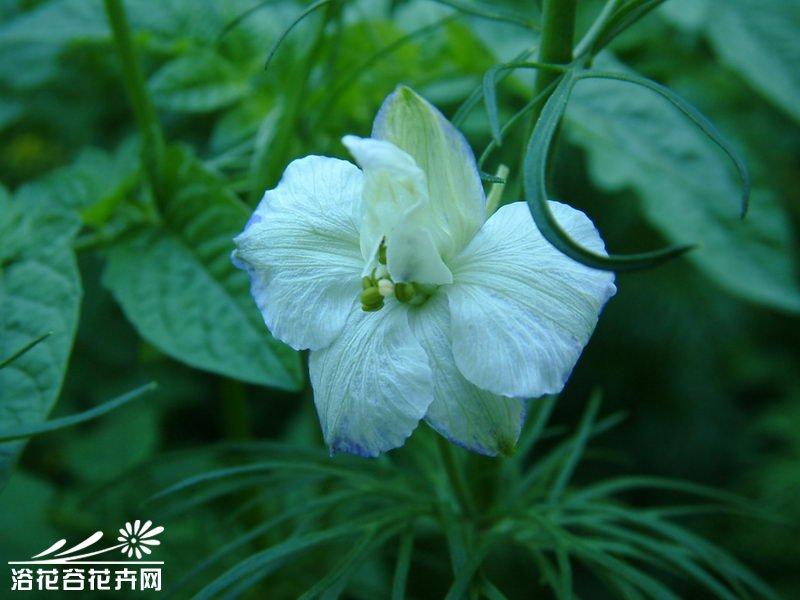
翠雀,毛茛科翠雀属,别名鸽子花,大花飞燕草。为多年生宿根草本,株高35-65cm。叶互生,掌状3裂,总状花序顶生,子房3枚心皮组成,?突果,种子黑褐色,花的生长期6-9月,8-10月为果熟期,种子寿命为1年。喜太阳充足,耐半阴,忌炎热,喜干燥耐瘠薄。播种(种植)分株繁殖。发芽(生长出新芽)适温15-18度,露地直播或盆播,播后覆土0.5-1cm,20天左右出苗,出苗后带土坨移载,直根性不耐移植。
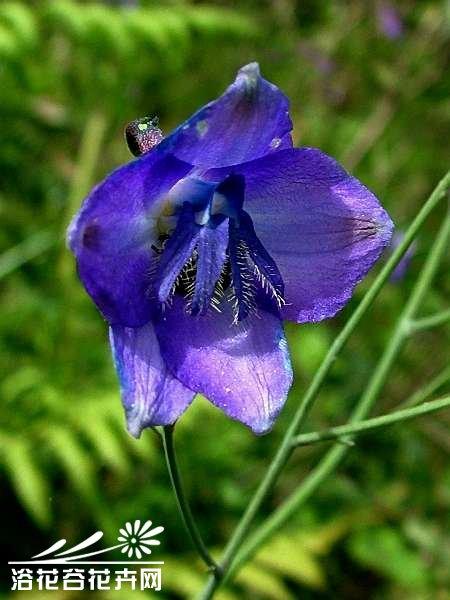

翠雀,毛茛科翠雀属,别名鸽子花,大花飞燕草。为多年生宿根草本,株高35-65cm。叶互生,掌状3裂,总状花序顶生,子房3枚心皮组成,?突果,种子黑褐色,花的生长期6-9月,8-10月为果熟期,种子寿命为1年。喜太阳充足,耐半阴,忌炎热,喜干燥耐瘠薄。播种(种植)分株繁殖。发芽(生长出新芽)适温15-18度,露地直播或盆播,播后覆土0.5-1cm,20天左右出苗,出苗后带土坨移载,直根性不耐移植。

0
0
文章
绮丽
2017年05月20日


#唐菖蒲 花期
唐菖蒲自从种植开始一直到花开的时间需要60-120天之久,不过这是一般情况下,唐菖蒲开花会因季节变化而有所不同的。
在7、8月的时候种植,只需要两个月就会开花,而在10月份种植则需要120天才会开花,这样刚好等到春节就上市啦,为花友们庆祝新春;
另外在其它时期种植唐菖蒲,那么就需要3个月才开花,所以种植时间不同,开花的时间也会不同。
唐菖蒲怎么可以多开花
光温调控
唐菖蒲植株本身就喜好长时间的日照,所以要保证充足的光照,需要达到每天14小时以上的光照时间;
唐菖蒲的生长适温在20℃至25℃之间,有效的调光调温,这样就可以控制花期,也可以帮助唐菖蒲多多的开花 。
提前开花
要促唐菖蒲提前开花,就要保持温度在0℃至4℃的低温,这样需要50天之久,主要是为了打破休眠这样就可以领唐菖蒲继续生长,然后开花,提前开花的唐菖蒲也会正常开花的数量多,所以也做到了多开花。
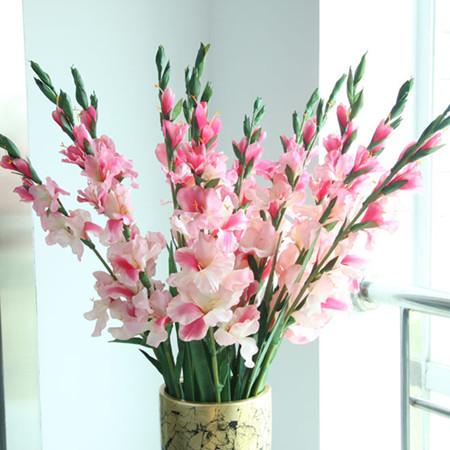
延迟开花
同样,提前开花可以多开花,延迟开花也可以促使其多开花;
可以量唐菖蒲的球茎一直放在干燥低温的环境里养护,让其保持休眠期;
然后依据你想要的开花期进行休眠期的打破,使其开花;
所以要在开花前的25天左右,用800ppm矮壮素浇灌球茎3次,这样就可以帮助唐菖蒲按你规定的时间开花了,而且多开花。
0
0



